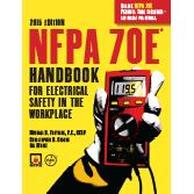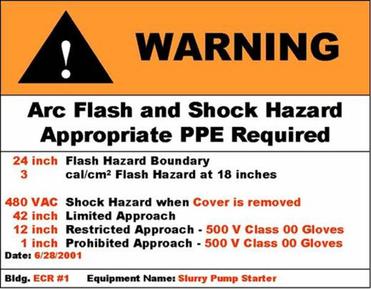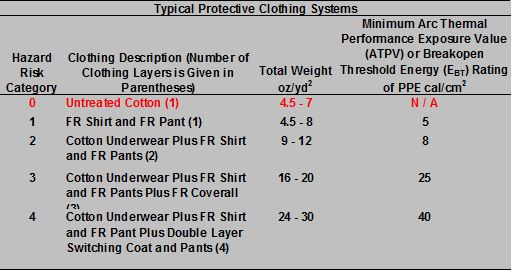
Arc Flash is “a phenomenon where a flashover of electric current leaves its intended path and travels through the air from one conductor to another, or to ground. The outcome is often violent and when a human is in close proximity to the arc flash, serious injury and even death can occur.” Simply put, arc flash is the white flash or pop that occurs when an energized metal part touches another neutral or grounded metal part. The following things can happen:
- A white flash or blast with pressures of up to 2,000 lbs. / sq. ft.
- Sound up to 140 dB.
- Heat upwards of 35,000 degrees F.
- Fire
- Flying objects – molten metal and shrapnel
- Burns to employees – thermal and radiation
- Duration is based on voltage - up to 2 seconds in length
An arc flash risk assessment is required to determine if an arc flash risk exists. This is for all city departments such as Water, Wastewater, and Electric, Public Works or any other buildings and areas that have an arc flash risk. If an arc flash risk does exist, the employer must determine the extent of this risk to their employees, require safe work practices, determine the arc flash boundary, and provide the correct PPE to protect those employees. The assessment can be completed a couple different ways:
- Following the tables in the NFPA 70E Handbook and complete yourself, or
- Hire an electrical engineering company to complete. IAMU has several Associate Member engineering companies listed on our website.
After you have your arc flash assessment completed and have labeled the equipment and purchased the required protective clothing and other personal protective equipment (PPE). The best way to reduce risk is to train employees on all aspects of electricity including:
- What is electricity?
- How can it hurt you?
- How to identify electric safety issues and damaged equipment?
- Who is qualified to repair or work with electric equipment?
- How to perform work with or near electrical parts
- Train employees on arc flash hazards
- Train employees on required PPE near electric hazards
- Label all electric panels with warnings
- Enforce all electric safety rules
There are five Hazard Risk Categories of PPE and these are listed on the chart below:
Hazard Risk Category 1 poses some risk. Examples of work in this category are such things as circuit breaker or fused switch operation with covers off rated at 240 volts or below and when opening hinged covers to expose bare energized parts up to 600 volts.
Hazard Risk Category 2 involves tasks that pose a moderate risk. These tasks included circuit breaker or fused switch operation with enclosure doors closed when working with 600 volt class motor control centers or work on control circuits with energized parts 120 volts or below, or when working on metal clad switchgear, 1kV and above.
Hazard Risk Category 3 includes tasks that pose a high risk. Examples of this work are insertion or removal of circuit breakers from cubicles, doors open, when working with 600 volt class switch gear or opening hinged covers of metal clad switchgear, 1kV and above.
Hazards Risk Category 4 represents tasks that pose the greatest risk. Some examples involve removal of bolted covers to expose bare, energized parts when working with fused motor starters 2.3kV through 7.2kV or opening voltage transformer or control power transformer compartments 1kV and above.
Does the City or Utility need a Risk Assessment if none of their employees open electrical boxes and the City hires subcontractors to perform this electric work?
Yes, according to OSHA’s Multi-employer worksite rule. OSHA citations or fines can be issued to:
- The Exposing Employer – their employees were exposed to the hazard
- The Creating Employer – who actually creates the hazard
- The Controlling Employer – is responsible for safety at the jobsite
- The Correcting Employer - is responsible for correcting the hazard at the jobsite.
Where do I find more information on NFPA 70E?
The best location for more information on these electrical requirements can be found in the 2015 Edition of NFPA 70E Handbook for Electrical Safety in the Workplace. This 70E handbook may be ordered by contacting IAMU.



 RSS Feed
RSS Feed
